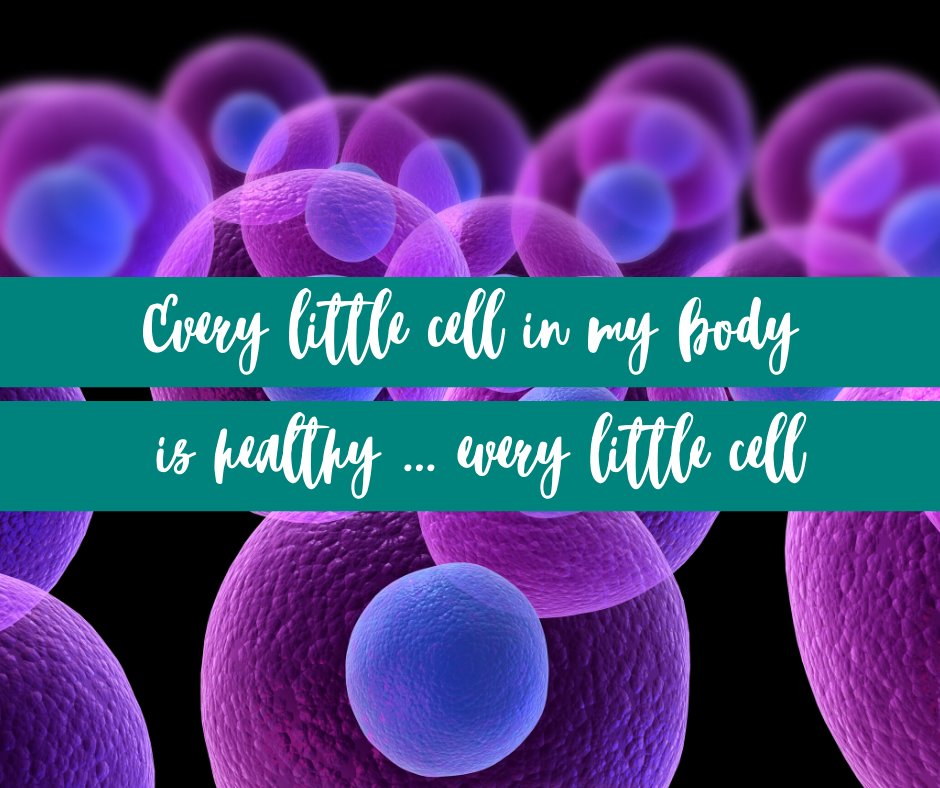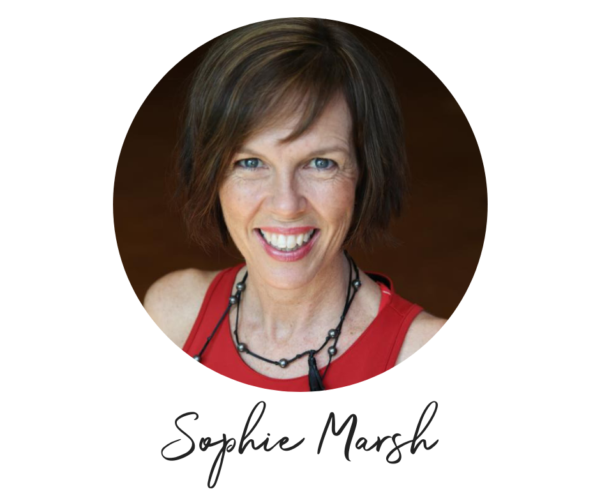
Every little cell in my body is healthy…every little cell…
We are facing unprecedented health challenges on a global scale, over which we have very little control. A lack of control can generate fear. Fear generates physiological and psychological stress responses. And prolonged stress lowers your immune system effectiveness, making you more susceptible to viral infections.
One way to temporarily feel more in control is to act out of the fear… to panic-buy toilet paper or tuna (the man in front of me at Woolworths yesterday had 50 tins)… but on the other side of that, you probably will still feel stressed… only with a very full pantry. Research suggests that while stress can drive materialism, shopping as a coping mechanism does not release stress.
So when it seems the world has gone crazy, what IS in your power?
You have the power to say, “I won’t fear the future.”
You have the power to say, “I won’t resign myself to living a life of fear.”
You have the power to say, “ I can decide today to recalibrate my energy and commit to love and joy,” and “I am making healthy and loving choices to keep my immune system strong.”
Medical and health professionals affirm that your first line of defence against any virus is to choose a healthy lifestyle, to naturally keep your immune system strong. Every part of your body, including your immune system, functions better when bolstered by healthy-living strategies such as these:
(1) Eat well, including lots of fresh, locally sourced vegetables every day. Protect against micronutrient deficiencies by taking a good quality supplement if your diet doesn’t include these foods:
Vitamin C is one of the biggest immune system boosters and a lack of vitamin C can make you more prone to getting sick. Foods rich in vitamin C include oranges, grapefruits, tangerines, strawberries, bell peppers, spinach, kale and broccoli. Daily intake of vitamin C is essential for good health because your body doesn’t produce or store it.
Vitamin B6 is vital to supporting biochemical reactions in the immune system. Vitamin B6-rich foods include chicken and cold water fish such as salmon and tuna. Vitamin B6 also is found in green vegetables and in chickpeas, which is the main ingredient in hummus.
Vitamin E is a powerful antioxidant that helps the body fight off infection. Foods rich in vitamin E include nuts, seeds and spinach.
(2) Move your body:
To be immunologically fit, you need to be physically fit. “White blood cells can be quite sedentary,” says Prof Arne Akbar, the president of the British Society for Immunology and a professor at University College, London.
“Exercise mobilises them by increasing your blood flow, so they can do their surveillance jobs and seek and destroy in other parts of the body.”
The current recommendation is for adults to be physically active in some way every day, and do at least 150 minutes a week of moderate aerobic activity (hiking, gardening, cycling, Nia) or 75 minutes of vigorous activity (running, swimming fast, Nia FreeDance or MOVEit). The advice for older people, who are more vulnerable to infection, is to do whatever exercise is possible. “Anything’s better than nothing,” says Akbar. In 2018, a study by University of Birmingham and King’s College London found that 125 non-smoking amateur cyclists aged 55 to 79 still had the immune systems of young people.
(3) Get enough quality sleep, including resting or napping if needed.
One of the many happy side-effects of exercise is that it reduces stress, which is next on our list of immune-boosting priorities… Exercising and eating well will have the likely knock-on effect of helping you sleep better, which is a bonus because a tired body is more susceptible to bugs.
(4) Restore your nervous system to relaxation response, where your immune system can function optimally to fight off viruses and get you well in case you get sick.
In the Nia White Belt we learn to practice “Living Meditation” which evokes the “relaxation response” to counteract the toxic effects of chronic stress by slowing breathing rate, relaxing muscles, and reducing blood pressure. Other ways to cultivate this response include visualisation, progressive muscle relaxation, energy healing, acupuncture, massage, breathing techniques, prayer, meditation, tai chi, qi gong, and yoga.
(5) Breathe deeply and ground yourself into the foundation of Mother Earth.
Spend time in nature. Emerging scientific evidence shows that contact with the Earth—whether being outside barefoot or indoors connected to grounded conductive systems—may be a simple, natural, and yet profoundly effective strategy for reduced pain, better sleep, a shift from sympathetic to parasympathetic tone in the autonomic nervous system (ANS), and a blood-thinning effect. The research done to date supports the concept that grounding or earthing the human body may be an essential element in the health equation along with sunshine, clean air and water, nutritious food, and physical activity.
(6) Wash your hands… 10-20 seconds with soap and running water or an 60% alcohol-based sanitiser
(2 rounds of Happy Birthday) whenever you return home from from any activity that involves locations where other people have been. (I’ll have some at the sign in desk for before and after class.) Bring a towel for FloorPlay. Make choices that feel sustainable, not hysterical. You might use your knuckle to touch light switches. elevator buttons and avoid touching stair-rails as much as possible. You might lift the petrol pump with a paper towel. You might cover the supermarket trolley handle with a plastic bag… or you might do things as you usually do them and wash you hands after.
(7) Raise your resonance by choosing Joy, Gratitude, Love, Appreciation, Faith.
“Cortisol is a stress hormone, & when we are constantly on high alert or living in the fight or flight response, we mobilise an enormous amount of the body’s energy for some threat in our lives—real or imagined—and it causes our immune system to lower. In other words, if we are utilising all the body’s resources for some threat in our outer world in order to defend ourselves from a perceived danger, there is little energy in our inner world for growth, repair, & internal defence. Thus, the lower our immune system, the more susceptible we are to sickness and disease….
As cortisol levels go up, a chemical called IgA goes down. This isn’t good because IgA is a protein, one of the strongest building blocks of life. IgA is responsible for the healthy function of our body’s supreme internal defence system called the immune system. It’s constantly fighting a barrage of bacteria, viruses, & organisms that invade and/or are already living within the body’s internal environment. Bottom line: IgA is better than any flu shot or immune system booster you could possibly take—and it’s totally natural.
During the course of our 4 day workshop, we asked our 120 study participants to move into an elevated emotional state such as love, joy, or gratitude for 9-10 minutes, 3 times a day, to determine if we could do the reverse. If we could elevate our emotional states, could we raise our immune system and reduce stress hormones like cortisol? We discovered at the conclusion of the event that the cortisol levels of our participants dropped by three standard deviations, and their IgA levels shot up on average from 52.5 to 86. These are significant, measurable changes…. What this tells us is that we don’t need a pharmacy or an exogenous substance to heal us—we have the power from within to up-regulate the genes that make IgA.
“Something as simple as moving into an elevated state of joy, love, or gratitude for 5-10 minutes a day can produce significant epigenetic changes in our health.” Dr Joe Dispenza
(8) Sing the “Happy Cell Song” (thanks Winalee HeartDance)
To the tune of Shortenin’ Bread… “Every little cell in my body is healthy… every little cell in my body is well. Every little cell in my body is healthy… every little cell in my body is well. I’m so glad… every little cell… in my body is happy and well!”
Sources: The Guardian 8 March 2020 Harvard Health Publishing “Earthing: Health Implications of Reconnecting the Human Body to the Earth’s Surface Electrons”, Journal of Environmental and Public Health James Robb, MD FCAP (ex Professor of Pathology and Coronavirus researcher, UCSD) Lissa Rankin, MD and author of “Mind Over Medicine” “The Relaxation Response” by Herbert Benson MD Dr Joe Dispenza https://drjoedispenza.net/blog/health/the-power-of-gratitude/
This post was written by Sophie Marsh and published here.

Sophie Marsh is Australia’s only White Belt Trainer in the International Nia Training faculty and the first Aussie Black Belt teacher. She has completed the Nia White, Green, Blue, Brown and Black Belt trainings, the Art of Teaching (Level 1), Moving to Heal, 52 Moves and the Nia 5 Stages trainings. Sophie is based in Brisbane.
For over 18 years, she has guided and inspired people to reclaim their aliveness, fitness, well-being and sense of Self through Nia’s body-centred movement and education. After living and training in the US, Sophie brought Nia home with her when she returned to Brisbane in 2004. She has been collaboratively building and leading an Australia-wide Nia community ever since.
In her classes, workshops, retreats and trainings, Sophie holds a welcoming and playful space for people of all ages and backgrounds to connect with their body’s innate wisdom and joy of movement. Sophie also shares adapted Nia sessions, “Joy Therapy” for populations with special needs, including multicultural communities, teens and older populations, mental health groups, cancer survivors, and for women desiring to heal their relationship with their sensuous body.
Learn more about Sophie and her Class Timetable.
